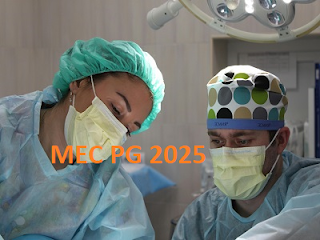📚 Everything You Need to Know About the NEB Grade 12 Examination 2082
The National Examination Board (NEB) of Nepal has officially announced the Grade 12 board examinations for the year 2082 B.S. This is one of the most important academic milestones for students in Nepal, as it determines their eligibility for higher education and career opportunities.
This blog post covers all the important details from the official notice, including the exam date, preparation tips, rules, and how to stay informed. Whether you're a student, guardian, or teacher, this guide will help you stay updated and prepared.
🗓️ When Will the Grade 12 Exams Begin?
According to the NEB, the Grade 12 exams will start on Jestha 14, 2082 (corresponding to May 27, 2025 in the Gregorian calendar). The exam will be conducted across Nepal in various centers as assigned by the board.
All exams will be held under strict supervision, following the rules and policies of NEB. It’s crucial that students appear for the exams on time with full preparation and required documents.
📃 What Does the Exam Include?
The Grade 12 examination includes both:
Theoretical (written) exams, and
Practical exams (for applicable subjects)Students must participate in both to receive a complete result. The practical exams are usually conducted by the respective schools before the written exams, and marks are submitted to NEB.
🧾 Important Points From the Official NEB Notice
Here are the major highlights of the notice issued by NEB:
Final Exam Date: The national board exam for Grade 12 will begin on Jestha 14, 2082.
Admit Card Requirement: Students must carry their official admit card to the exam center. No student will be allowed to enter the exam hall without it.
Online Resources: All exam-related updates, admit card downloads, and exam center details will be available on the official NEB website: www.neb.gov.np
Scanned Documents: Schools must upload clear and accurate scanned copies of student data. Mistakes in name, registration number, or subject codes may cause issues during the exam or result processing.
Verification Before Exam: Students are advised to verify all personal and academic details with their schools ahead of time. Any errors must be corrected early to avoid complications.
Instruction to Schools and Colleges: All educational institutions must help students with document verification, practical exam completion, and timely submission of internal evaluation marks to NEB.
🧑🎓 How Should Students Prepare?
Here’s a checklist for students preparing for the NEB Grade 12 board exams:
✅ Verify your subject codes, registration number, and name on your admit card.
✅ Collect your admit card from your school on time.
✅ Complete all practical work and internal assessments as required.
✅ Create a study plan and follow it strictly.
✅ Solve past papers to get used to the exam pattern.
✅ Stay healthy, eat well, and get enough rest.Preparation is not just about studying hard but also studying smart. Focus more on revision, mock tests, and understanding key concepts rather than just memorizing answers.
🚫 What Not to Do During the Exam
To avoid disqualification or penalties, here’s what you must NOT do:
❌ Do not carry mobile phones, notes, or any digital devices into the exam hall.
❌ Do not attempt to cheat or help others cheat.
❌ Do not be late to the exam center.
❌ Do not ignore NEB’s guidelines, even if they seem small.All students are expected to follow the rules and maintain discipline during the exam period.
🌐 Use the NEB Website for Updates
The NEB has advised all students and schools to regularly visit www.neb.gov.np for:
🔹 Admit card downloads
🔹 Exam timetable
🔹 List of exam centers
🔹 Notices and updates
🔹 Result publicationThe website is the most reliable source for official information. Make sure to check it often, especially during the exam period.
🏫 What Are Schools and Colleges Required to Do?
Schools and colleges have a big role in making the Grade 12 exam successful. Their responsibilities include:
📌 Verifying student records and correcting any mistakes.
📌 Conducting practical exams and submitting marks on time.
📌 Distributing admit cards and informing students about the exam centers.
📌 Assisting students in using the NEB portal and following exam rules.Educational institutions must take these duties seriously to avoid any issues for their students during the exams.
🏔️ A Note for Students in Remote Areas
For students in remote or rural parts of Nepal, NEB has advised early preparation. This includes ensuring your documents are submitted and admit cards are collected ahead of time.
If internet or transportation access is limited, students should coordinate with their schools or local authorities to avoid missing any deadlines or important updates.
👮 Exam Safety and Security
To maintain fairness and discipline, NEB has set strict guidelines for exam security:
✅ Surveillance at exam centers
✅ Secure printing and delivery of question papers
✅ Deployment of flying squads to monitor centers
✅ Checking identity before allowing entryThese measures are in place to ensure a smooth and credible exam process for all students.
📌 Final Words
The Grade 12 Examination 2082 is a major academic turning point for every student in Nepal. Your performance in this exam can shape your future—whether that’s in medicine, engineering, management, or any other field.
The NEB has made all arrangements to conduct the exams smoothly. Now it’s your responsibility to prepare well, follow the rules, and stay focused.
Let’s approach this important phase with discipline, confidence, and a positive mindset.
📢 Stay connected with our blog for study tips, subject-wise guides, and all updates related to NEB exams. Wishing you all the very best for the Grade 12 Examination 2082!





